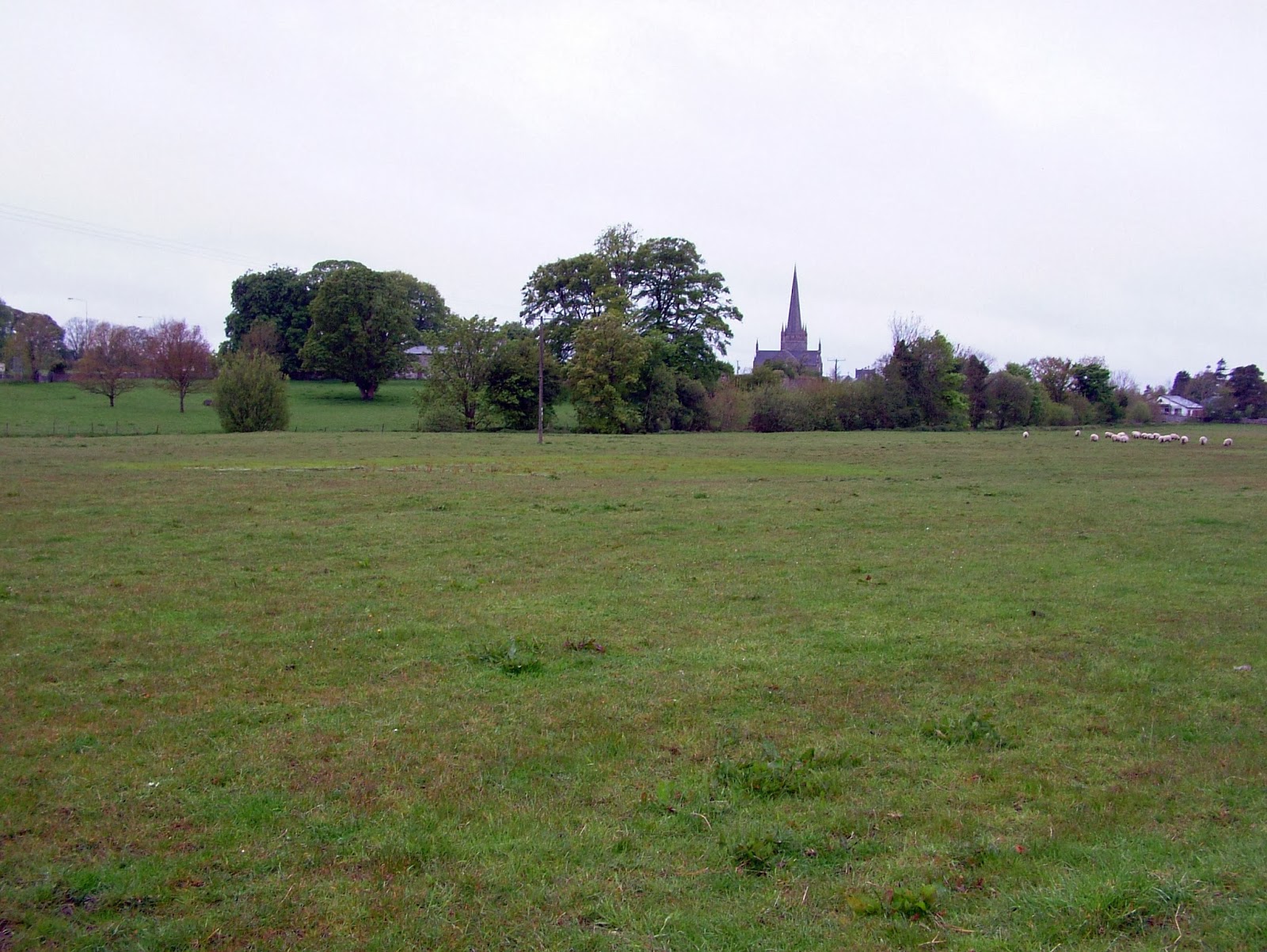 |
| Aughrim Village from the Causeway:copyright BHilton. |
the Jacobites were victorious by holding their line and completely repulsing the enemy! This would have meant in historical terms possibly -
1. The continuation of the war for at least another year.
2. The replacement of Ginkel as Williamite commander in Ireland.
3. A renewed French interest in the campaign and its impact on events in Flanders
4. The possible return of James II to Ireland.
5. Rethinking of grand strategy on both sides.
6. Perhaps the return of William to finish off what others had been unable to do.
Mere conjecture I agree but all within the bounds of possibility had the battle gone to St Ruhe. The wargaming 'what if' possibilities presented by these various options is very attractive and already stimulating some ideas in my head.
Of course in our version St Ruhe did not die, the Aughrim Castle garrison did not run out of ammunition and there was no command paralysis in the Jacobite Army. Whether the other players noticed or not I am unsure but I did place General St Ruhe deliberately in danger many times. I attached him to front line units under artillery fire, I placed him supporting panicking units running away from the field, I positioned him close by units in melee and likely to lose. All of this demonstrating the gambler's mentality to encourage a similar fate to history. Luckily for the great man he rallied troops, made great officer saves and encouraged his army to victory!
We allowed the battle to run for a long day from early morning. I lost count of the turns but we must have run over 40. Even allowing 15 minutes per turn this makes 10 hours of fighting - longer than Waterloo!
What can be inferred from that? Well if we'd restricted the battle to 16 turns the Williamites would have had zero chance of winning. By the end of T16 we had just finished part 1. The Jacobite line was steady and their cavalry were beginning to charge on both flanks. The Williamites had achieved a position roughly akin to that of the historical battle at that point;
Attibrasil was being forced, the Bloody Hollow was a bloody stalemate and on their right, the infantry was stuck at the bottom of Kilcommodan Hill. An attempt to force the causeway had been repulsed. Casualties were probably lighter than in the real battle.
So, if we'd decapitated St Ruhe, deprived Butler of his bullet's and frozen Jacobite movement for two turns right then, we may have had the historical result. As it stands, with an aggressive defence and an intact commander, the Jacobites fought well and I think intelligently.
The rating of the troops was not overly favourable or unfavourable either way. The Jacobites had no Guard units whatsoever notwithstanding titles. They had more than a sprinkling of Recruit infantry (about 18%) and only two Elite battalions (the Guards). Their Horse were all BLADE with about 50% classed as Elite.
The Williamites had 7 squadrons of Guard Horse & Dragoons and 2 Elite battalions (Coldstream and Danish Guards). Their artillery superiority was extremely telling. Recruit battalions were approximately 10% of the total available infantry.
Commander ratings for both armies were identical. The terrain seemed to be well balanced and exerted an appropriate level of influence on tactics.
 |
| St Ruhe turns his mind to other matters pressing |
So overall, an exciting, well balanced and tense game that could have gone either way up until the last two or three moves.
More post match analysis to follow with the commander's perspectives, casualty returns and a Heroes and Villains gallery!
